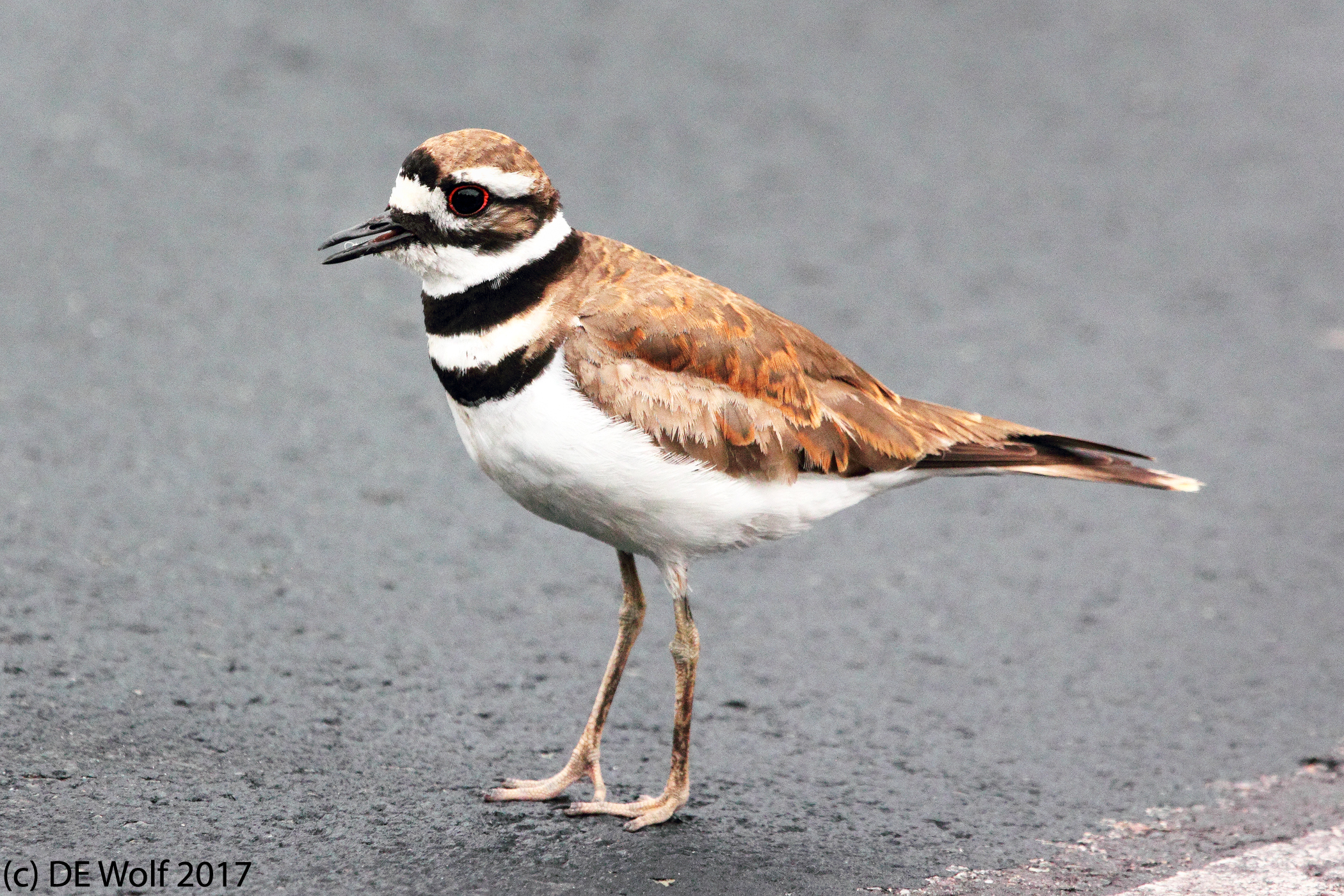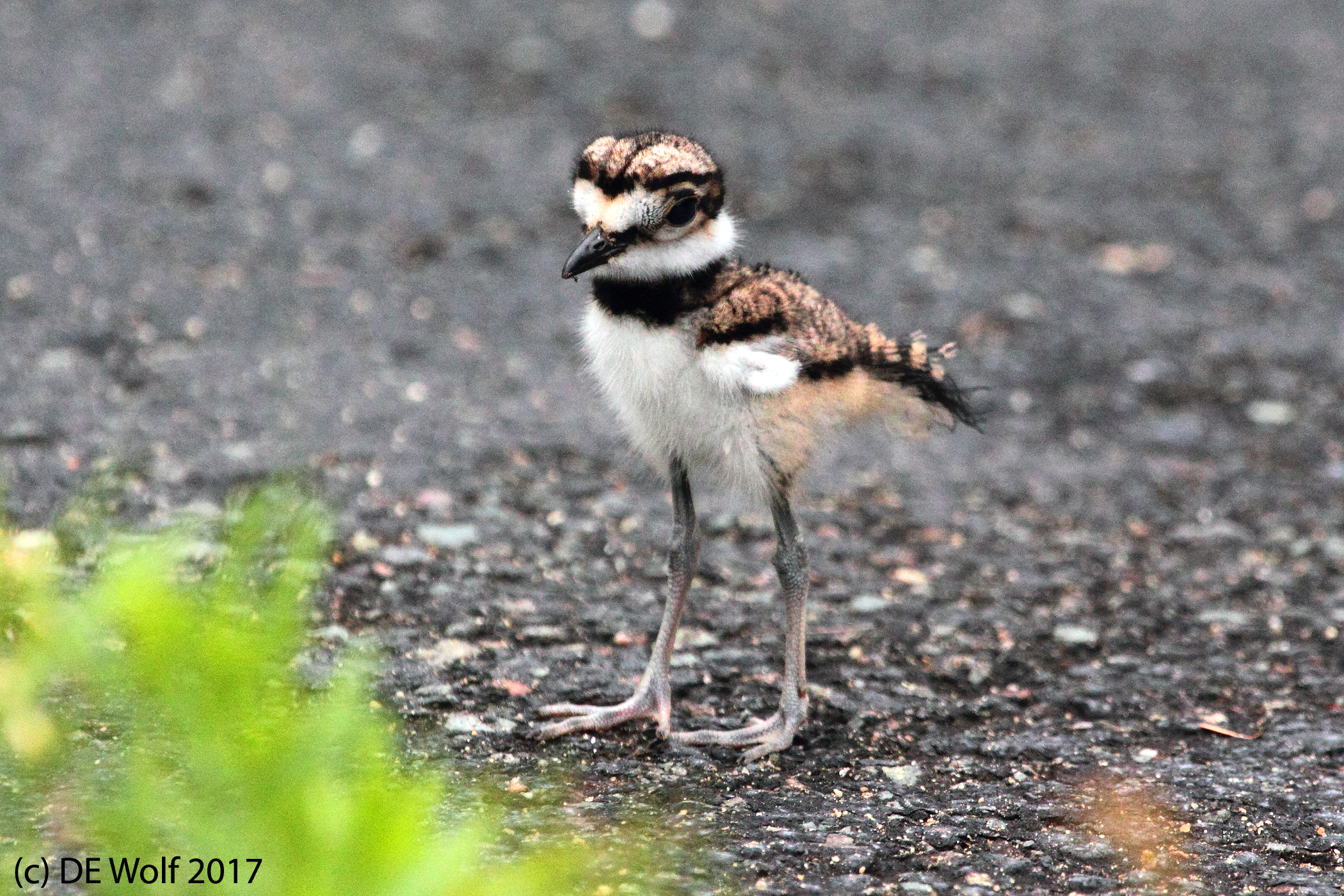I was driving home from work yesterday and was passing an abandoned section of the parking lot. Abandoned here means a section never used that has in part surrendered to grass and weeds. I noticed two killdeers (Charadrius vociferus) and so decided to bring my bird lens in today to see if I could find them again.
I also decided to bring my car. I had heard that birds run or fly away from humans but not from automobiles. They seem to see cars as part of the landscape; so they are the perfect birding blind. Well, I can now say “true enough.” I immediately found the killdeers and the fuss. They had their fledge with them, and this little bird was darting about but staying close to its parent’s cry. With the car I was able to get remarkably close. And they didn’t seem to be particularly bothered by my slowly driving into a more advantageous position.
The Cornell Laboratory of Ornithology’s website makes the interesting point that with the inland killdeer, you don’t have to go to the beach to find this close relative of the semipalmated plover. The killdeer is another one of those birds whose name derives onomatopoeically from its call – here a distinctive “Kill-Deer.” Their most dramatic behavior is the broken wing act that they use to distract predators away from the nest.
Figure 1 – Canon T2i with EF100-400mm f/4.5-5.6L IS USM lens at 310 mm, ISO 800, Aperture Priority AE Mode,1/2000 sec at f/7.1 with -1 exposure compensation.
Figure 2 – Canon T2i with EF100-400mm f/4.5-5.6L IS USM lens at 400 mm, ISO 1600, Aperture Priority AE Mode,1/4000 sec at f/7.1 with -1 exposure compensation.


